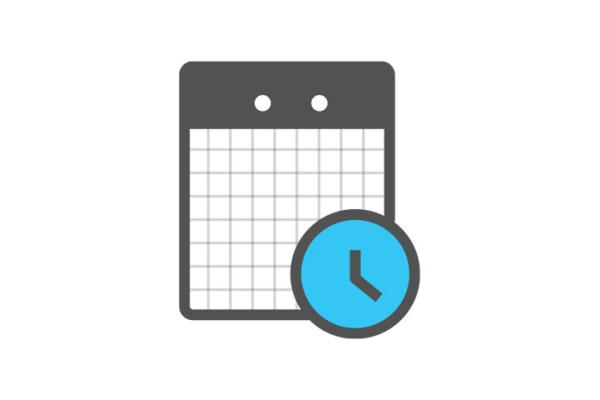The European Core Health Indicators (ECHI), formerly known as European Community Health Indicators are the result of a long-term cooperation between the EU Member States and the European Commission.
Three ECHI projects (1998-2001, 2001-2004, 2005-2008) funded under the EU Health Programmes established the first lists of ECHI indicators, aiming to create a comparable health information and knowledge system to monitor health at EU level.
Under the Second Programme of Community Action in the Field of Health 2008-2013, the EU funded the Joint Action (JA) on European Community Health Indicators Monitoring (ECHIM). The JA ECHIM built on previous achievements and developed more precise definitions of the indicators and continued the implementation of the indicators in the Member States.
One of the aims of the ECHIM was to consolidate and expand the ECHI indicator system towards a sustainable health monitoring system in Europe supporting the EU Health Strategy. The work was carried out in close collaboration with Member States, the European Commission, Eurostat, WHO, OECD and other international organisations.
The JA ended in June 2012 and the main result was a shortlist of 88 health indicators classified by policy areas.
In May 2013, the Expert Group on Health Information agreed to rename the ECHI to European Core Health Indicators.
Definitions and data collection are in place for nearly 60 out of 88 ECHI indicators. The indicators under development still need further refinement before being accessible in the ECHI data tool.
ECHI indicators are grouped below under five main chapters. To access data and metadata, click on the indicator to go to the ECHI data tool. This tool allows presenting selected indicators in different layouts: line chart, bar chart, map or table.
Indicators are at the crossroads of policy questions and data sets. They reflect a policy interest as well as a selected set of possibilities in terms of what can be calculated. For these reasons, the European Commission also presents other European health indicators that are not part of the ECHI system but are still useful to health stakeholders (see below).
Intended indicators below are also directly accessible through the ECHI data tool.
Where considered useful or appropriate, stratification by gender and age is applied. Breakdowns by socio-economic or regional level are provided when available.
Demography and socio-economic situation<
1. Population by sex / age - Old-age-dependency ratio (I)
2. Birth rate, crude (I)
3. Mother's age distribution (I)
4. Total fertility rate (I)
5. Population projections (I)
6. Population by education (I)
7. Population by occupation (D)
8. Total unemployment (I)
9(a). Population below poverty line (I)
9(b). Income inequality (I)
Health status
10. Life expectancy (I)
Life expectancy by educational attainment (I)
11. Infant mortality (I)
12. Perinatal mortality (I)
13. Disease-specific mortality (I)
14. Drug-related deaths (I)
15. Smoking-related deaths (D)
16. Alcohol-related deaths (D)
17. Excess mortality by heat waves (D)
18. Selected communicable diseases (I)
19. HIV/AIDS (I)
20. Cancer incidence (D)
21(a). Diabetes: self-reported prevalence (I)
21(b). Diabetes: register-based prevalence (D)
22. Dementia (D)
European health indicator on dementia
23(a). Depression: self-reported prevalence (I)
23(b). Depression: register-based prevalence (D)
24. Acute myocardial infarction (AMI) (D)
25. Stroke (D)
26(a). Asthma: self-reported prevalence (I)
26(b). Asthma: register-based prevalence (D)
27(a). Chronic obstructive pulmonary disease (COPD): self-reported prevalence (I)
27(b). Chronic obstructive pulmonary disease (COPD): register-based prevalence (D)
28. Low birth weight (I)
29(a). Injuries: home, leisure, school: self-reported incidence (I)
29(b). Injuries: home, leisure, school: register-based incidence (I)
30(a). Injuries: road traffic: self-reported incidence (I)
30(b). Injuries: road traffic: register-based incidence (D)
31. Injuries: workplace (I)
32. Suicide attempt (D)
33. Self-perceived health (I)
34. Self-reported chronic morbidity (I)
35. Long-term activity limitations (I)
36. Physical and sensory functional limitations (I)
37. General musculoskeletal pain (D)
38. Psychological distress (D)
39. Psychological well-being (D)
40(a). Health expectancy: Healthy Life Years (HLY) (I) - 2004 onwards
40(b). Health expectancy: Healthy Life Years (HLY) (I) - before 2004
41. Health expectancy, others (I)
Determinants of health
42. Body mass index (I)
43. Blood pressure (I)
44. Regular smokers (I)
45. Pregnant women smoking (D)
46. Total (recorded + unrecorded) alcohol consumption (I)
Total (recorded) alcohol consumption
47. Hazardous alcohol consumption (I)
48. Use of illicit drugs (I)
49. Consumption of fruit (I)
50. Consumption of vegetables (I)
51. Breastfeeding (D)
52. Physical activity (I)
53(a). Work-related health risks (I)
53(b). Work-related health risks (I)
54. Social support (I)
55. PM (particulate matter) exposure (I)
Health interventions: health services
56. Vaccination coverage in children (I)
57(a). Influenza vaccination rate in the elderly (survey data) (I)
57(b). Influenza vaccination rate in the elderly (administrative data) (I)
58(a). Breast cancer screening (survey data)
58(b). Breast cancer screening (administrative data)
59(a). Cervical cancer screening (survey data)
59(b). Cervical cancer screening (administrative data)
60. Colon cancer screening (I)
61. Timing of first antenatal visits among pregnant women (D)
62. Hospital beds (I)
63. Practising physicians (I)
64. Practising nurses (I)
European health indicator on other health professionals
65. Mobility of professionals (D)
66. Medical technologies: MRI units and CT scanners (I)
67. Hospital in-patient discharges, limited diagnosis (I)
68. Hospital day cases, limited diagnoses (I)
69. Hospital day-cases as percentage of total patient population (in-patients & day-cases), selected diagnoses (I)
70. Average length of stay (ALOS), limited diagnoses (I)
71. General practitioner (GP) utilisation (D)
72. Selected outpatient visits (D)
European health indicator on self-reported visits to a dentist or orthodontist
73. Selected surgeries (I)
74. Medicine use (I)
75. Patient mobility (I)
76. Insurance coverage (I)
77(a). Expenditures on health care as percentage of GDP (I)
77(b). Expenditures on health care in millions of Purchasing Power Standard (PPS) (I)
78. Survival rates cancer (I)
79. 30-day in-hospital case-fatality of acute myocardial infarction (AMI) and ischemic stroke (I)
80. Equity of access to health care services (I)
European health indicator on equity of access to dental care services
81. Waiting times for elective surgeries (I)
82. Surgical wound infections (D)
83. Cancer treatment quality (D)
84. Diabetes control (D)
Health interventions: health promotion
85. Policies on environmental tobacco smoke (ETS) exposure (D)
86. Policies on healthy nutrition (D)
87. Policies and practices on healthy lifestyles (D)
88. Integrated programmes in setting, including workplace, schools, hospital (D)




